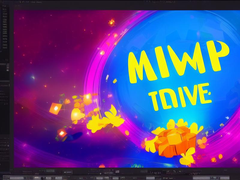Learning Javanese Language: A Comprehensive Overview
The Javanese language, spoken primarily on the island of Java in Indonesia, is a rich and culturally significant language. It has a long history and a deep cultural impact, influencing various aspects of Javanese society. This article provides an in-depth look at the Javanese language, its structure, and its importance in Indonesian culture.
Language Structure and Dialects
Javanese is an Austronesian language with a complex structure, including a rich system of levels of speech. The language has three primary levels: Ngoko (informal), Madya (middle), and Krama (formal). Each level serves a distinct purpose and reflects the social hierarchy and context. Additionally, Javanese has several regional dialects, which vary in pronunciation, vocabulary, and usage, depending on the area.
Cultural Significance and Usage

Javanese plays a crucial role in preserving cultural heritage and traditional practices. It is used in various cultural ceremonies, literature, and traditional performances such as wayang kulit (shadow puppetry). Understanding and using Javanese not only connects individuals to their heritage but also supports the continuation of traditional arts and customs.
Challenges and Preservation Efforts
Despite its cultural importance, Javanese faces challenges such as declining use among younger generations and the dominance of Indonesian (Bahasa Indonesia) in daily life. Efforts to preserve the language include educational programs, cultural initiatives, and digital resources aimed at promoting Javanese language and literature.
In conclusion, the Javanese language is a vital part of Indonesia’s cultural landscape, reflecting the historical and social nuances of the Javanese people. Preserving and promoting Javanese is essential for maintaining cultural heritage and fostering a deeper understanding of Indonesia’s diverse linguistic and cultural heritage.









